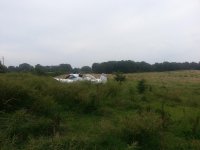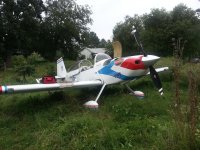Acenels
Active Member
How far can your RV glide with the engine out?
So I surfed around all kinds of places. I read the Cafe testing of an RV6A (what I fly). And I gotta tell ya, people who have a glide ratio over 9:1, I think it's wrong. Mayyyybe the RV9 is way different, but not a 6. Its much less.
In fact, in my "POH" that was created for my plane, which I have modified, it is listed as 11.4:1, and that is WAY over what I found through testing.
Would love to hear any other thoughts here. My methodology explained in the video.
So I surfed around all kinds of places. I read the Cafe testing of an RV6A (what I fly). And I gotta tell ya, people who have a glide ratio over 9:1, I think it's wrong. Mayyyybe the RV9 is way different, but not a 6. Its much less.
In fact, in my "POH" that was created for my plane, which I have modified, it is listed as 11.4:1, and that is WAY over what I found through testing.
Would love to hear any other thoughts here. My methodology explained in the video.






